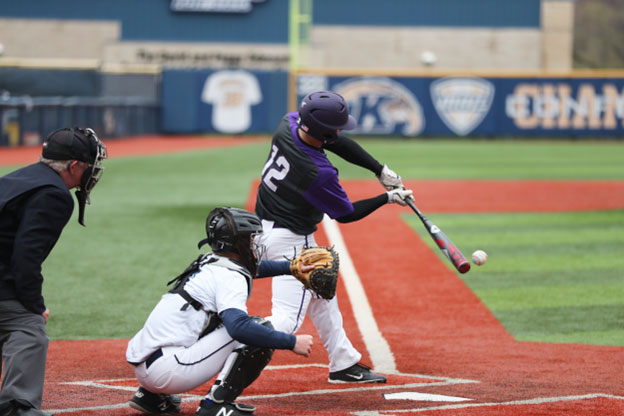Baseball is one of the most popular sports in the United States and for good reason. It has been around since the late 19th century, with its origins stretching back even further to games played by Native Americans centuries ago. But how many innings are there in a regulation baseball game?

Understanding the Structure of Baseball Games
Baseball is played in innings, with nine innings traditionally making up a single game. However, it is not uncommon for extra innings to be played if the score remains tied after nine innings. This can result in games lasting well beyond the traditional nine-inning duration.
Innings are further divided into halves called "tops" and "bottoms," which indicate which team will bat first. The home team always bats second. Each half of an inning is completed when three outs have been recorded.
At the end of each half-inning, the team with the higher score is declared the winner. The game can end in a tie if both teams have an equal number of runs at the end of nine innings. However, some leagues may play additional innings to determine a winner.
Innings: The Building Blocks of Baseball Games
Typically, a baseball game consists of nine innings, with each team getting the opportunity to bat and play defense for nine rounds. However, there are exceptions to this standard. Extra innings are played when the game remains tied at the end of the ninth inning. Additional innings are then played until a winner is determined. This adds an element of excitement and suspense as teams battle it out to secure victory.
It's important to note that in professional baseball games, both major league and minor league, each team gets to bat in every inning. However, in some school or youth baseball games, there may be variations. For example, time constraints or other factors might restrict the game to five, six, or seven innings.

The objective of the defensive team is to prevent runs from being scored by getting three outs. Once they achieve this, the inning ends and it's time for the opposing team's turn at bat. A game becomes official once it has completed a predetermined number of innings, usually five in Major League Baseball if one team is leading.
Duration of Baseball Games
On average, a professional baseball game lasts around three hours. However, there are several factors that can influence the length of a game.
One major factor is the number of pitching changes throughout the game. Pitchers often need time to warm up before entering the game, and sometimes teams make multiple pitching changes in an inning to gain a competitive advantage. These changes can add time to the overall length of the game.
The scoring pace also plays a role in the duration of a baseball game. If both teams are consistently scoring runs, the game can stretch out as more time is spent on the bases and in between plays. On the other hand, if the game is a low-scoring affair, the pace may be quicker and the game could finish sooner.
Other elements that can impact the length of a game include the number of hits, walks, and strikeouts, as well as the number of defensive plays and timeouts taken by teams. Inclement weather or in-game reviews by umpires can also extend the length of a game.
Overall, the duration of a baseball game can vary greatly. However, the typical nine-inning game typically lasts around three hours.
The Standard Number of Innings in Baseball
When it comes to the game of baseball, a key aspect that defines the structure and duration of matches is the number of innings played. In the world of professional baseball, both in major and minor leagues, as well as college and school-level baseball games, the standard number of innings is typically nine.
Major League Baseball (MLB)
In Major League Baseball (MLB), a standard game consists of nine innings. This tradition has deep historical significance in the sport.
The nine-inning structure allows both teams an equal opportunity to display their skills on offense and defense. It provides a balanced and fair framework for competition. Additionally, nine innings have become the universally accepted standard across most leagues, including the prestigious MLB.
This tradition has evolved over time. In the early years of professional baseball, the number of innings varied between seven and nine, depending on the league and time period. However, as the sport gained popularity and professionalism increased, nine innings became the standard.
The nine-inning structure also contributes to the excitement and suspense of the game. It allows for potential comebacks and extra-inning showdowns, which keep fans engaged and on the edge of their seats.
While there have been discussions and experiments with adjusting the number of innings to address concerns over game length and fan engagement, the nine-inning tradition remains a fundamental aspect of Major League Baseball. It provides a consistent and deeply-rooted structure that allows for fair competition and thrilling moments on the diamond.
Extra Innings
In baseball, there are times when a game doesn't end after the standard nine innings. This is known as extra innings and brings an added level of excitement and drama to the sport.
When a game is tied after nine innings, both teams have the opportunity to score and win in extra innings. Each additional inning is played until there is a winner. However, there are some rule changes during extra innings to keep games from going on indefinitely. For instance, starting in the 10th inning, each team begins its offensive half with a runner on second base. This rule change aims to increase the chances of scoring and ultimately determine a winner.
Extra innings often lead to intense competition, as teams try to capitalize on the opportunity to win. It requires strategic decision-making and exceptional performances from both pitchers and hitters. The longer the game goes on, the more pressure there is on each team to perform and avoid making any mistakes.

Although extra innings are exciting, they can also pose challenges for teams and players. Fatigue becomes a factor as games extend beyond their scheduled length. This can affect pitching and defensive strategies, as well as the overall performance of the teams involved.
Whether it's a quick resolution or a prolonged battle, extra innings add an element of unpredictability and thrill to baseball games. It's an opportunity for players to showcase their skills under pressure and for fans to witness the resilience and determination of their favorite teams.
Conclusion
In conclusion, baseball games are typically played over nine innings. However, in the event of a tie, teams have the opportunity to play extra innings until a winner is determined. Extra innings bring a thrilling level of competition as teams battle to secure victory.
To prevent games from going on indefinitely, rule changes come into effect during extra innings. Starting in the 10th inning, each team is granted a runner on second base, increasing the chances of scoring and ultimately deciding a winner. This adds an additional element of strategy to the game.
While extra innings can be exhilarating, they also present challenges for teams and players. Fatigue becomes a factor as games extend beyond their scheduled length, affecting pitching and defensive strategies. Both teams are under intense pressure to perform and avoid making mistakes.
Baseball is a game that requires strategic decision-making and exceptional performances from both pitchers and hitters. The longer the game goes, the more intense it becomes, showcasing the true spirit of competition.

If you're a fan of exciting and strategic sports, baseball is definitely a game worth exploring. It offers a balance of skill, teamwork, and strategy that keeps audiences engaged from start to finish. So grab some popcorn, sit back, and enjoy the artistry and drama that unfolds on the baseball diamond.
Frequently Asked Questions:
Can a baseball game end before nine innings?
Yes, a baseball game can end before reaching the standard nine innings. If one team is leading after the top of the fifth inning (4.5 innings) and the game is called off due to inclement weather or other unforeseen circumstances, the team in the lead will be declared the winner.
What happens if the game is tied after nine innings?
If a baseball game is tied after the completion of the standard nine innings, teams will continue to play extra innings until a winner is determined. In the Major League Baseball (MLB), starting from the 10th inning, each team is granted a runner on second base to increase the chances of scoring and expedite the game's conclusion.
Are there any exceptions to the standard nine innings in professional baseball?
While the standard number of innings in professional baseball games is nine, there are exceptions. In minor league baseball, college baseball, and some international leagues, games may be played with a different number of innings. For example, college baseball games are often played with nine innings, but doubleheaders or certain circumstances may require seven-inning games instead.
Are there differences in the number of innings played in different baseball leagues or levels?
Yes, different baseball leagues and levels may have variations in the number of innings played. Youth baseball leagues or school-level games, for instance, commonly have shorter games with fewer innings. However, the objective remains the same, which is to determine a winner within the specified number of innings.
Can games be shortened due to weather conditions or other circumstances?
Yes, games can be shortened due to inclement weather, time constraints, or other circumstances. If a game is called off before reaching the required minimum number of innings (typically 5 innings in professional baseball), it is considered incomplete and will be rescheduled or canceled depending on the situation. Additionally, some leagues may enforce a mercy rule, which allows for a game to be ended early if one team establishes a dominant lead over the other.
In conclusion, while the standard number of innings in professional baseball games is nine, there are exceptions and variations in different leagues and levels. Games can be shortened due to weather conditions or other circumstances, and extra innings are played to determine a winner if the game is tied after nine innings.


